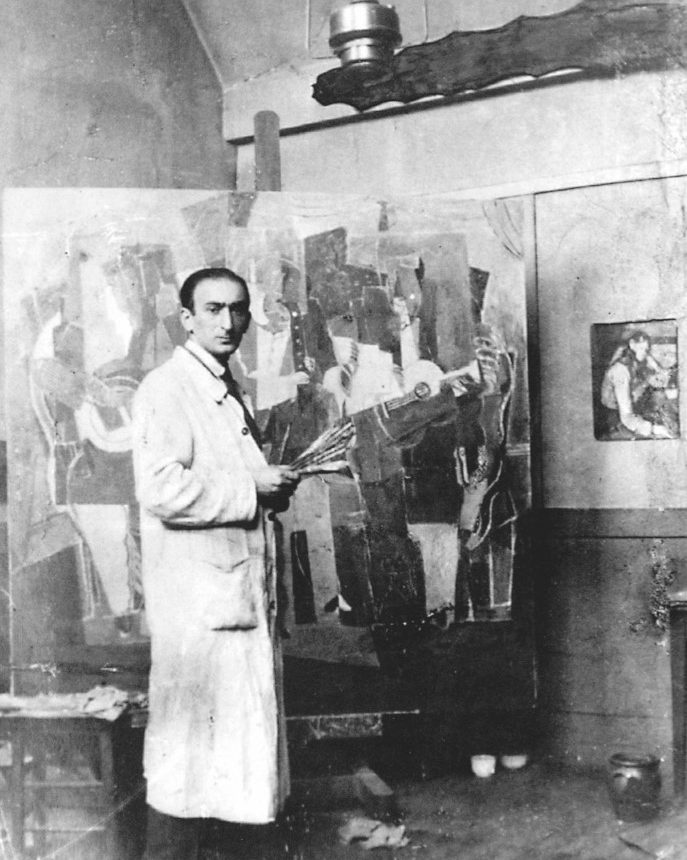Frania HART
January 2, 2019Joseph HECHT
January 2, 2019Henri HAYDEN
WARSAW 1883 – PARIS 1970
Henri Hayden was born into a family of wine merchants. In 1902, owing to parental pressure, he registered as an engineer in the Warsaw Polytechnic, but at the same time also enrolled in the Fine Arts Academy in Warsaw, where his talent was quickly recognized. With financial help from his father, he spent a year in Paris in 1907—the year when Picasso painted Les Demoiselles d’Avignon. Hayden never returned to Poland. He worked independently in a studio on boulevard Saint-Michel, isolated from his peers.
In 1908, he studied at the Palette art school, where Charles Guérin and George Desvallieres were teachers. He was influenced by Gauguin, who he discovered through Wladyslaw Slewinski during one of his frequent stays in Brittany. In Montparnasse, he met the key artists of the Cubist movement including Juan Gris, Picasso, Jacques Lipchitz, and Jean Metzinger. Hayden exhibited his work regularly. He painted abstract landscapes, which had affinities with the work of the Pont-Aven School. In 1912, he found support in the solid and measured work of Cézanne, who influenced his work on the way to Cubism. In 1914, he signed a contract with the dealer Léonce Rosenberg and later with Charles Malpel. He had a passion for music and associated with Les Six. He illustrated the program for the premiere of Erik Satie’s Morceaux en forme de poire. During the war, he took refuge in Mougins, near Cannes, where he met Robert Delaunay, and later in Roussillon-d’Apt where he became friendly with Samuel Beckett.
He returned to Paris in 1944 and discovered that his studio had been plundered. During the last twenty years of his life, Hayden’s paintings were exhibited many times in Paris, Dublin, Lyon, Caen, Amiens, and Aix-en-Provence. In 1935, he broke away from all the references that haunted his work and moved towards more figurative works.
Stories of Jewish Artists of the School of Paris 1905-1939
FRENCH-ENGLISH
Capitale des arts, le Paris des années 1905-1939 attire les artistes du monde entier. De cette période de foisonnement, un terme est resté, celui d'Ecole de Paris, qui recouvre une grande diversité d'expression artistique. Dans ce brassage dont Montparnasse est le creuset, un groupe se distingue : celui des artistes juifs venus de Russie, de Pologne et d'Europe centrale. Si leurs styles sont variés, un destin commun les rassemble : ils fuient l'antisémitisme de leur pays d'origine. Certains ont connu la célébrité dès les années 1920, tels Soutine, Lipchitz ou Chagall. D'autres n'ont pas eu le temps ou la chance d'y accéder. Près de la moitié a péri dans les camps de concentration nazis.
From 1905 to 1939, Paris attracted artists from all over the globe as the capital of the art world. This period of artistic proliferation became known as the School of Paris, and includes a great diversity of artistic expression. Within the teeming art world centred on Montparnasse, one group set itself apart: Jewish artists from Russia, Poland, and Central Europe. Although their styles were diverse, they shared the common fate of fleeing anti-Semitic persecutions in their home countries. Some became famous in the 1920s, such as Soutine, Lipchitz, and Chagall, while others did not have the time or the luck to gain renown. Nearly half of these artists died in Nazi concentration camps.





